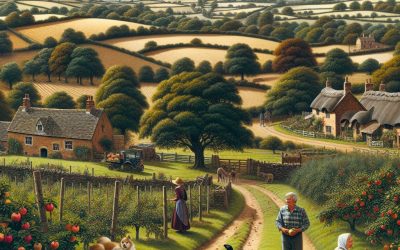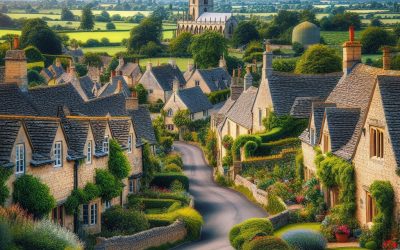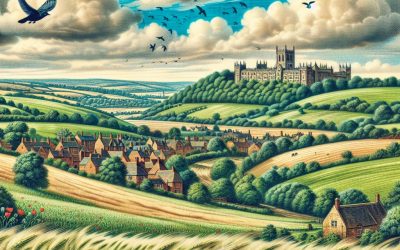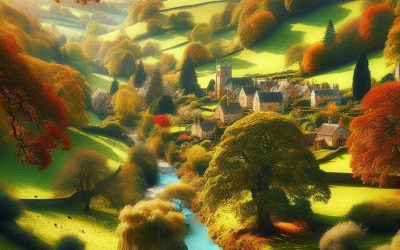World Geography
Geography is the study of the Earth’s landscapes, environments, and the relationships between people and their surroundings. It encompasses both the physical aspects of the Earth, such as its landforms, bodies of water, and climate, as well as the human aspects, including population distribution, cultures, and economies. World geography is a broad field that seeks to understand the complexities of our planet and how humans interact with it. By studying world geography, we can gain a deeper appreciation for the diversity of our planet and the interconnectedness of its various regions.
Geography is a multidisciplinary field that draws on elements of physical science, social science, and humanities. It involves the use of maps, spatial analysis, and geographic information systems (GIS) to understand the Earth’s surface and the processes that shape it. World geography also encompasses the study of human geography, which examines the ways in which people and their activities are distributed across the Earth. By understanding world geography, we can better appreciate the environmental, cultural, and economic challenges facing different regions of the world. This knowledge is crucial for addressing global issues such as climate change, resource management, and international development.
The Five Oceans and Seven Continents
The Earth’s surface is divided into five major oceans: the Pacific, Atlantic, Indian, Southern (or Antarctic), and Arctic Oceans. These vast bodies of water play a crucial role in regulating the Earth’s climate and supporting diverse marine ecosystems. The oceans also serve as important transportation routes and a source of food and other natural resources for human societies around the world.
In addition to the oceans, the Earth’s landmasses are divided into seven continents: Africa, Antarctica, Asia, Europe, North America, Australia (or Oceania), and South America. Each continent has its own unique physical and cultural characteristics, shaped by millions of years of geological processes and human history. From the deserts of Africa to the rainforests of South America, the continents offer a rich tapestry of landscapes and environments for exploration and study.
Major Mountain Ranges and Deserts
The Earth’s surface is also marked by major mountain ranges and deserts that have shaped the planet’s physical and cultural landscapes. The Himalayas, for example, are the highest mountain range in the world and are home to diverse ecosystems and cultures in countries such as India, Nepal, and Bhutan. The Andes in South America, the Rockies in North America, and the Alps in Europe are other prominent mountain ranges that have influenced human settlement patterns and economic activities.
Deserts cover about one-third of the Earth’s land surface and are characterized by low precipitation and extreme temperatures. The Sahara Desert in Africa is the largest hot desert in the world, while the Gobi Desert in Asia is one of the largest cold deserts. Deserts are not only home to unique flora and fauna but have also been important trade routes and cultural crossroads throughout history.
Climate Zones and Biomes
The Earth’s climate is influenced by a variety of factors, including latitude, altitude, ocean currents, and prevailing winds. As a result, the planet is divided into different climate zones, each with its own characteristic weather patterns and ecosystems. The equator, for example, experiences a tropical climate with high temperatures and heavy rainfall, while the polar regions have a cold and dry climate.
These climate zones give rise to different biomes, or large ecological areas characterized by distinct plant and animal communities. The tropical rainforest biome, found near the equator, is home to a diverse array of species and is vital for regulating the Earth’s climate. The grasslands biome, found in regions such as the African savannah and North American prairies, supports grazing animals and has been important for human agriculture throughout history.
Human Geography and Population Distribution
Human geography examines the ways in which people and their activities are distributed across the Earth’s surface. It encompasses topics such as population growth, migration patterns, urbanization, and cultural diversity. Understanding human geography is crucial for addressing global challenges such as poverty, inequality, and environmental degradation.
Population distribution is uneven across the world, with some regions experiencing rapid population growth while others are declining. The majority of the world’s population lives in Asia, particularly in countries such as China and India. Urban areas are also growing rapidly, with more than half of the world’s population now living in cities. This trend has significant implications for infrastructure development, resource management, and social inequality.
Historical and Cultural Geography
Historical geography examines how human activities have shaped the Earth’s landscapes over time. It explores topics such as colonialism, trade routes, and the rise and fall of empires. Cultural geography focuses on how human cultures have developed in different regions of the world and how they interact with their environments.
The Silk Road, for example, was an ancient trade route that connected China with Europe and facilitated the exchange of goods, ideas, and technologies across Eurasia. This historical trade route had a profound impact on the development of cultures and economies along its path. Similarly, cultural geographers study how different societies have adapted to their environments through practices such as agriculture, architecture, and religious beliefs.
The Importance of Geographic Knowledge
Geographic knowledge is crucial for addressing global challenges such as climate change, resource management, and international development. By understanding world geography, we can better appreciate the environmental, cultural, and economic challenges facing different regions of the world. This knowledge is crucial for addressing global issues such as climate change, resource management, and international development.
Geographic knowledge also helps us to understand our interconnectedness with other regions of the world. By studying world geography, we can gain a deeper appreciation for the diversity of our planet and the interconnectedness of its various regions. This understanding can foster a sense of global citizenship and empathy for people from different cultures and backgrounds.
In conclusion, world geography is a complex and multifaceted field that encompasses both physical and human aspects of the Earth’s landscapes. By studying world geography, we can gain a deeper appreciation for the diversity of our planet and the interconnectedness of its various regions. This knowledge is crucial for addressing global challenges such as climate change, resource management, and international development. It also helps us to understand our interconnectedness with other regions of the world and fosters a sense of global citizenship.
FAQs
What is world geography?
World geography is the study of the Earth’s landscapes, environments, and the relationships between people and their environments. It encompasses the physical features of the Earth, as well as the human activity that takes place on it.
Why is world geography important?
World geography is important because it helps us understand the world around us. It provides insights into the physical and human processes that shape our planet, and helps us make informed decisions about how to interact with our environment.
What are the main branches of world geography?
The main branches of world geography include physical geography, which focuses on the Earth’s natural features and processes, and human geography, which examines the relationships between people and their environments.
How does world geography impact our daily lives?
World geography impacts our daily lives in numerous ways, from influencing the weather and climate we experience, to shaping the availability of natural resources and influencing the distribution of populations and cultures around the world.
What are some key concepts in world geography?
Key concepts in world geography include location, place, human-environment interaction, movement, and region. These concepts help geographers understand and interpret the world around them.
Shropshire, England
Shropshire, located in the West Midlands region of England, is a county steeped in history and natural beauty. It is bordered by Wales to the west and several other counties including Staffordshire, Cheshire, and Worcestershire. The county has a rich history dating back to Roman times, and its picturesque landscapes have inspired many artists and writers over the years. Shropshire is often referred to as “the quietest county in England” due to its peaceful and tranquil atmosphere. It is a place where you can escape the hustle and bustle of city life and immerse yourself in the beauty of the countryside. With its charming market towns, rolling hills, and meandering rivers, Shropshire offers a unique blend of history, culture, and natural beauty that is worth exploring. Summary Shropshire is a county located in the heart of England, known for its natural beauty and rich history. Visitors can explore the hills, valleys, and countryside of Shropshire, as well as its castles, museums, and heritage sites. Adventure sports, walking, and cycling are popular activities in Shropshire, and visitors can also enjoy local produce and fine dining. Shopping, entertainment, and accommodation options are plentiful in Shropshire, from quaint cottages to luxury hotels. Families can enjoy zoos, theme parks, and playgrounds, while art galleries, music venues, and literary festivals cater to the cultural scene. Discovering the Natural Beauty of Shropshire: From Hills to Valleys One of the highlights of Shropshire is the Shropshire Hills Area of Outstanding Natural Beauty. This stunning landscape covers a quarter of the county and is home to some of the most breathtaking views in England. From the...
Surrey, England
Surrey, located in the South East of England, is a county known for its stunning landscapes, rich history, and vibrant culture. With a population of over 1.1 million people, Surrey is one of the most populous counties in England. It is bordered by Greater London to the north, Kent to the east, Sussex to the south, and Hampshire to the west. Surrey has gained a reputation as a desirable place to live and visit due to its proximity to London, excellent transport links, and high quality of life. The county offers a perfect balance between urban and rural living, with bustling towns and cities coexisting with picturesque countryside and charming villages. Summary Surrey is a beautiful county located in the South East of England. The history of Surrey dates back to Roman times and has a rich cultural heritage. Surrey’s landscape is characterized by rolling hills, woodland, and waterways. The county has a vibrant culture and traditions, with festivals, food and drink, and local customs. Surrey is home to charming towns and cities such as Guildford, Woking, and Epsom, as well as picturesque villages and countryside. History of Surrey: From Roman Times to the Present Day Surrey has a rich history that dates back to Roman times. The Romans occupied the area in the 1st century AD and established settlements such as Southwark and Staines. During medieval times, Surrey became an important center for trade and agriculture. The county was home to several royal palaces, including Guildford Castle and Farnham Castle. In more recent history, Surrey has seen significant developments and growth. The Industrial Revolution brought about changes...
Kyiv City, Ukraine
Kyiv City, also known as Kiev, is the capital and largest city of Ukraine. It is located in the north-central part of the country along the Dnieper River. With a population of over 3 million people, Kyiv City is not only the political and administrative center of Ukraine but also its cultural and economic hub. The city has a rich history that dates back centuries and is known for its stunning architecture, vibrant arts scene, and warm hospitality. Summary Kyiv City is the capital and largest city of Ukraine, located in the north-central part of the country. The city has a rich history dating back to the 5th century, with influences from various cultures and empires. Kyiv City has a humid continental climate with hot summers and cold winters, making it a popular destination for winter sports enthusiasts. The population of Kyiv City is around 3 million people, with a diverse mix of ethnicities and languages spoken. The economy of Kyiv City is driven by industries such as finance, IT, and manufacturing, with a growing startup scene. Historical Overview of Kyiv City Kyiv City has a long and storied history that spans over 1,500 years. It was founded in the 5th century by the East Slavic tribe known as the Polans. In the 9th century, it became the capital of the powerful Kyivan Rus’ state, which was one of the largest and most influential medieval states in Europe. During this time, Kyiv City flourished as a center of trade, culture, and religion. In the 13th century, Kyiv City was invaded and destroyed by the Mongols. It then fell...
Crimea, Ukraine
The Crimean Peninsula, located on the northern coast of the Black Sea, has a rich and complex history that has shaped its significance in both global politics and current events. From ancient Greek and Roman settlements to Mongol invasions and Soviet rule, Crimea has been at the center of conflicts and power struggles throughout history. In recent years, the annexation of Crimea by Russia in 2014 has further heightened tensions in the region and sparked international controversy. This article will explore the history of Crimea, the annexation by Russia, the struggles of the Crimean Tatars, the impact of the conflict on Crimean society, the challenges and opportunities facing the region’s economy, the impact on tourism, the international response to the annexation, the future prospects for Crimea, and the humanitarian situation in the region. Summary Crimea has a rich history dating back to ancient times, with various empires and cultures leaving their mark on the peninsula. Russia’s annexation of Crimea in 2014 was a controversial move that sparked international condemnation and sanctions. The Crimean Tatars, a minority group native to the region, have faced discrimination and persecution throughout history and continue to struggle for their rights and recognition. The conflict in Ukraine has had a significant impact on Crimean society, with many facing economic hardship and political repression. The economy of Crimea faces challenges due to sanctions and isolation, but also presents opportunities for development in tourism and agriculture. The History of Crimea: From Ancient Times to Modern Day The history of Crimea dates back to ancient times when it was inhabited by Greek colonies such as Chersonesus and...
Herefordshire, England
Herefordshire, located in the West Midlands region of England, is a county known for its natural beauty and rich history. Nestled between the Welsh border to the west and the counties of Shropshire, Worcestershire, and Gloucestershire, Herefordshire offers visitors a unique blend of stunning countryside, charming market towns, and fascinating historical sites. The county has a long and storied history, with evidence of human habitation dating back thousands of years. From the ancient hill forts and burial mounds that dot the landscape to the medieval castles and churches that still stand today, Herefordshire is a treasure trove of historical sites and landmarks. In addition to its historical significance, Herefordshire is also renowned for its natural beauty. The county is home to the picturesque Wye Valley, an Area of Outstanding Natural Beauty that offers breathtaking views of rolling hills, meandering rivers, and lush green countryside. With its abundance of walking trails, cycling routes, and outdoor activities, Herefordshire is a paradise for nature lovers and outdoor enthusiasts. Summary Herefordshire is a county with natural beauty and rich history. The picturesque countryside and charming market towns are worth exploring. Herefordshire has a fascinating history and heritage to discover. The local cuisine and traditional dishes are delicious. There are plenty of activities and attractions for families and children in Herefordshire. Exploring Herefordshire’s picturesque countryside and charming market towns One of the main attractions of Herefordshire is its picturesque countryside. The county is characterized by rolling hills, meandering rivers, and lush green fields, making it a haven for nature lovers and outdoor enthusiasts. Whether you enjoy hiking, cycling, or simply taking in the...
Rutland, England
Rutland, located in the East Midlands of England, is the country’s smallest county. With an area of just 147 square miles, it may be small in size, but it is big on charm and natural beauty. Despite its small size, Rutland has a lot to offer visitors, from its picturesque countryside and historic market towns to its vibrant arts and culture scene. Whether you’re a nature lover, history enthusiast, or simply looking for a peaceful getaway, Rutland is definitely worth a visit. Summary Rutland is England’s smallest county, located in the East Midlands. The county has a rich history dating back to Roman times, with evidence of settlements and battles throughout the centuries. Rutland’s countryside offers some of the best walks and hikes in the country, with stunning views and diverse wildlife. Rutland Water is a must-visit destination, offering a range of activities including water sports, cycling, and birdwatching. The county is home to rare species and natural wonders, making it a haven for nature lovers. The History of Rutland: From Roman Times to the Present Day Rutland has a rich and fascinating history that dates back to Roman times. The area was once home to a Roman fort and was an important trading hub during the Roman occupation of Britain. Over the centuries, Rutland has seen its fair share of historical events and figures. During the Middle Ages, it was a thriving agricultural region and was home to several castles and manor houses. In more recent history, Rutland played a significant role in the Industrial Revolution, with the development of the railway and the growth of industry...
Exploring the Grandeur of Blenheim Palace: A Stately Home Fit for Royalty
Blenheim Palace, located in Woodstock, Oxfordshire, is one of the most iconic stately homes in the United Kingdom. It is a masterpiece of Baroque architecture and is renowned for its stunning grounds and rich history. Built in the early 18th century, Blenheim Palace has been the ancestral home of the Churchill family for over 300 years. It is a UNESCO World Heritage Site and attracts thousands of visitors each year. Blenheim Palace holds great importance in British history and culture. It was built as a gift to John Churchill, the 1st Duke of Marlborough, by Queen Anne for his victory at the Battle of Blenheim in 1704. The palace has since been passed down through generations of the Churchill family and has played a significant role in shaping British politics and society. It is also closely associated with Sir Winston Churchill, one of Britain’s greatest leaders, who was born at Blenheim Palace in 1874. Summary Blenheim Palace is a stunning example of British architecture, located in Oxfordshire. The palace has a rich history, having been built as a gift to the first Duke of Marlborough in the early 18th century. The palace’s baroque architecture is a sight to behold, with intricate details and grandeur throughout. The grounds of Blenheim Palace are equally impressive, with a picturesque landscape and beautiful gardens. Visitors can explore the state rooms of the palace, which are filled with opulence and elegance, as well as a Churchill exhibition. The History of Blenheim Palace: A Legacy of the Churchill Family The history of Blenheim Palace is deeply intertwined with that of the Churchill family. John...
Oxfordshire, England
Oxfordshire, located in the heart of England, is a county known for its rich history, stunning natural landscapes, prestigious universities, and vibrant arts and culture scene. This blog post will provide a comprehensive guide to exploring Oxfordshire, highlighting its historical sites, natural beauty, famous universities, top tourist attractions, local cuisine, arts and culture scene, sporting traditions, accommodation options, festivals and events, and charming towns and villages. Whether you are a history buff, nature lover, foodie, art enthusiast, sports fan, or simply looking for a relaxing getaway, Oxfordshire has something to offer for everyone. Summary Oxfordshire has a rich history and heritage, with landmarks such as Blenheim Palace and the Ashmolean Museum. The county boasts stunning natural beauty, including the Cotswolds and the Chiltern Hills. Oxfordshire is home to world-renowned universities, including Oxford and the University of Reading. Visitors should check out popular attractions like Bicester Village and the Oxford Botanic Garden. Oxfordshire’s food culture is unique, with local specialities like Banbury cakes and Oxford sausages. The History and Heritage of Oxfordshire Oxfordshire has a fascinating history that dates back thousands of years. The county is home to several key historical sites and landmarks that are worth visiting. One of the most iconic landmarks in Oxfordshire is the University of Oxford, which was founded in the 12th century and is one of the oldest universities in the world. The university’s stunning architecture and rich history make it a must-visit attraction. Another historical site in Oxfordshire is Blenheim Palace, a UNESCO World Heritage Site and the birthplace of Sir Winston Churchill. This magnificent palace is surrounded by beautiful gardens and...
Nottinghamshire, England
Located in the heart of England, Nottinghamshire is a county that offers a wealth of attractions and experiences for visitors. From its rich history and heritage to its stunning natural beauty and bustling cities, Nottinghamshire has something for everyone. Whether you are interested in exploring ancient castles, immersing yourself in the arts and culture scene, or simply enjoying the picturesque countryside, Nottinghamshire has it all. Summary Nottinghamshire boasts a rich history and heritage, with evidence of human activity dating back to the Ice Age. The charming towns and villages of Nottinghamshire offer a glimpse into the county’s past, with well-preserved architecture and quaint streets. Nottinghamshire’s stunning natural beauty and scenic countryside make it a popular destination for outdoor enthusiasts and nature lovers. The famous landmarks and attractions of Nottinghamshire, such as Sherwood Forest and Nottingham Castle, draw visitors from around the world. Nottinghamshire’s thriving arts and culture scene includes world-class museums, galleries, and theatres, as well as a vibrant music and festival scene. Nottinghamshire’s rich history and heritage Nottingham Castle and Robin Hood One of the most iconic landmarks in Nottinghamshire is Nottingham Castle. Built in the 17th century on the site of the original medieval castle, it offers panoramic views of the city and is steeped in history. The castle is famously associated with the legendary outlaw Robin Hood, who is said to have roamed Sherwood Forest and used the castle as a hideout. Visitors can explore the castle grounds, visit the museum, and learn about the fascinating history of this legendary figure. The Lace Market and textile industry Nottinghamshire has a long history of lace making...
Sussex, England
See Also: East Sussex West Sussex Located in the southeastern part of England, Sussex is a county known for its rich history, stunning countryside, and charming towns. With its proximity to London and its diverse range of attractions, Sussex has become a popular destination for tourists from all over the world. Sussex has a long and fascinating history that dates back thousands of years. It was once home to the ancient Britons and later became part of the Roman Empire. The county is dotted with historic sites, including castles, stately homes, and prehistoric sites, which offer a glimpse into its past. In addition to its historical significance, Sussex is also known for its picturesque countryside. From rolling hills and meandering rivers to beautiful beaches and nature reserves, there is no shortage of natural beauty to explore in this part of England. Summary Sussex offers a charming blend of history and natural beauty. Visitors can explore rolling hills, beaches, nature reserves, castles, and prehistoric sites. The cultural scene in Sussex includes art galleries, theatres, and festivals. Foodies will love Sussex’s local produce, fine dining, and traditional pub grub. Sussex offers a range of accommodation options, from luxury hotels to quaint B&Bs and self-catering cottages. Discovering the Best of Sussex’s Countryside: Rolling Hills, Beaches, and Nature Reserves One of the highlights of Sussex’s countryside is the South Downs National Park. Covering an area of over 1,600 square kilometers, this national park offers breathtaking views of rolling hills, picturesque villages, and ancient woodlands. Visitors can explore the park on foot or by bike, following the many walking trails and cycling routes that...
Northumberland, England
Northumberland, located in the northeast of England, is a hidden gem that offers a unique experience for travelers. With its rich history, stunning coastline, and beautiful national park, Northumberland has something for everyone. Whether you’re interested in exploring historical sites, enjoying outdoor activities, or immersing yourself in the local culture, Northumberland has it all. Northumberland is known for its rugged landscapes and picturesque countryside. It is bordered by Scotland to the north and the counties of Cumbria and Durham to the west and south respectively. The region has a long and fascinating history, with evidence of human habitation dating back thousands of years. From Roman forts to medieval castles, Northumberland is steeped in history. Summary Northumberland is a hidden gem in Northern England with rich history, stunning coastline, and unique culture. The region boasts a rich heritage, including Hadrian’s Wall and Alnwick Castle, which are must-visit attractions. Northumberland’s coastline and beaches are breathtaking, with spots like Bamburgh Castle and Holy Island being popular tourist destinations. Nature lovers will find Northumberland National Park a haven, with its diverse wildlife and stunning landscapes. Northumberland’s culture and traditions are unique, with events like the Northumbrian Gathering celebrating the region’s heritage. Discovering Northumberland’s Rich History and Heritage Northumberland is home to a wealth of historical sites and landmarks that offer a glimpse into its past. One of the highlights is Hadrian’s Wall, a UNESCO World Heritage Site that was built by the Romans in the 2nd century AD. Stretching for 73 miles across the region, it is one of the most iconic landmarks in Britain. In addition to Hadrian’s Wall, Northumberland is...
Northamptonshire, England
Northamptonshire is a county located in the East Midlands region of England. It is bordered by eight other counties, including Warwickshire, Leicestershire, and Bedfordshire. With a population of over 700,000 people, it is one of the most populous counties in England. Summary Northamptonshire is a county located in central England with a rich history dating back to Roman times. The county boasts stunning natural beauty with its countryside and parks, perfect for exploring and outdoor activities. Northamptonshire is home to numerous museums, galleries, and historic sites that showcase its cultural heritage. The county is known for its delicious local cuisine and breweries, as well as its sporting legacy in football, rugby, and motorsports. Northamptonshire offers a diverse shopping experience with both high street brands and independent boutiques, and hosts a variety of festivals and events throughout the year. The History of Northamptonshire: From Roman Times to Present Day Northamptonshire has a rich history that dates back to Roman times. The Romans occupied the area and established a settlement known as Lactodorum, which later became the town of Towcester. The Romans also built several roads and forts throughout the county. During the Anglo-Saxon period, Northamptonshire was part of the Kingdom of Mercia. The county played a significant role in the Norman Conquest of England in 1066, with several battles taking place in the area. The Normans built castles and churches throughout Northamptonshire, many of which still stand today. In more recent history, Northamptonshire played a crucial role in the Industrial Revolution. The county was known for its iron and steel industries, as well as its shoemaking industry. Today, Northamptonshire...











